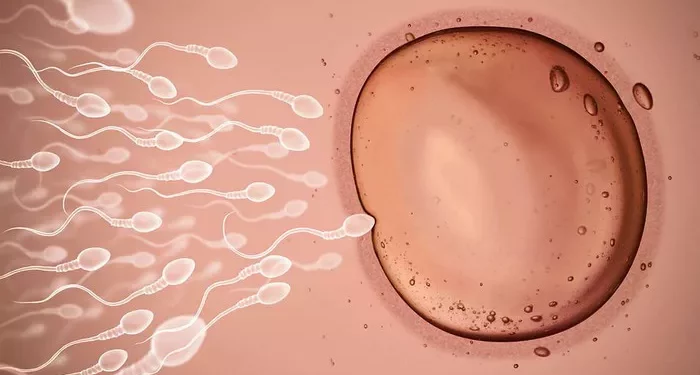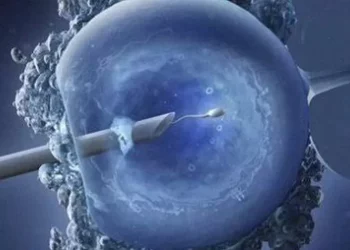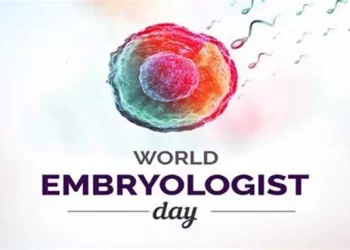Azoospermia is a medical condition characterized by the complete absence of sperm in the ejaculate. It affects approximately 1% of the male population and is found in about 10-15% of infertile men, making it a significant factor in male infertility. Azoospermia can be broadly classified into two main types: obstructive azoospermia (OA) and non-obstructive azoospermia (NOA). Understanding these classifications is crucial for proper diagnosis and treatment, as the management strategies for each type differ significantly.
Obstructive Azoospermia (OA)
Obstructive azoospermia occurs when sperm production within the testicles is normal, but there is a blockage somewhere along the reproductive tract that prevents sperm from being included in the ejaculate. This blockage can occur in the epididymis, vas deferens, or ejaculatory ducts.
Causes of Obstructive Azoospermia
Several factors can lead to obstructive azoospermia, including:
Infections: Infections such as epididymitis or prostatitis can lead to scarring and blockages in the reproductive tract.
Prior Surgeries: Surgeries, especially those involving the groin, scrotum, or pelvis, can result in scar tissue that obstructs the sperm pathways. Vasectomy, a surgical procedure for male contraception, is a common cause of intentional obstruction.
Anatomical Abnormalities: Congenital abnormalities, such as the absence of the vas deferens, often associated with cystic fibrosis, can cause OA. Similarly, cysts or other anomalies in the reproductive tract can obstruct sperm flow.
Trauma: Physical injury to the reproductive organs can result in scarring and subsequent blockage.
See also: New Frontiers in Azoospermia Treatment
Treatment Options for Obstructive Azoospermia
The treatment of obstructive azoospermia aims to either remove the blockage or retrieve sperm directly from the testicles or epididymis. Options include:
Surgical Correction: Microsurgical reconstruction, such as vasovasostomy (reconnecting the vas deferens) or vasoepididymostomy (connecting the vas deferens directly to the epididymis), can restore the passage for sperm.
Sperm Retrieval Techniques: If surgical reconstruction is not feasible or desired, sperm can be retrieved using techniques like percutaneous epididymal sperm aspiration (PESA) or testicular sperm extraction (TESE). These retrieved sperm can then be used in assisted reproductive technologies (ART) such as in vitro fertilization (IVF) or intracytoplasmic sperm injection (ICSI).
Non-Obstructive Azoospermia (NOA)
Non-obstructive azoospermia is characterized by a failure in sperm production within the testicles. This condition is often more complex to treat than obstructive azoospermia because it involves fundamental issues with sperm generation rather than a blockage in the reproductive tract.
Causes of Non-Obstructive Azoospermia
Non-obstructive azoospermia can result from a variety of factors, including:
Hormonal Imbalances: Hormones such as follicle-stimulating hormone (FSH), luteinizing hormone (LH), and testosterone play crucial roles in spermatogenesis. Imbalances in these hormones can impair sperm production. Conditions like hypogonadotropic hypogonadism can lead to NOA.
Genetic Disorders: Genetic abnormalities can significantly impact sperm production. Klinefelter syndrome (47,XXY karyotype), Y chromosome microdeletions, and other genetic mutations can disrupt normal spermatogenesis.
Testicular Dysfunction: Primary testicular failure, where the testicles themselves are unable to produce sperm, can be due to various reasons, including cryptorchidism (undescended testicles), trauma, radiation or chemotherapy, and severe varicoceles (enlarged veins in the scrotum).
Environmental and Lifestyle Factors: Exposure to toxins, excessive heat, certain medications, and substance abuse can adversely affect sperm production.
Treatment Challenges and Options for Non-Obstructive Azoospermia
Treating NOA is more challenging than OA due to the underlying issues with sperm production. Options include:
Hormonal Treatments: In cases where hormonal imbalances are the cause, treatments involving hormone replacement or medications that stimulate the hormonal axis can sometimes restore spermatogenesis.
Sperm Retrieval Techniques: Despite the production issues, some men with NOA may still have isolated areas of sperm production within the testicles. Techniques like microdissection testicular sperm extraction (micro-TESE) can be employed to locate and retrieve viable sperm for use in ART.
Assisted Reproductive Technologies (ART): Retrieved sperm can be used in IVF or ICSI to achieve pregnancy. ICSI is particularly useful as it requires only a single sperm to fertilize an egg.
Experimental Treatments: Research into stem cell therapy and gene editing holds promise for future treatments, although these are still largely experimental and not widely available.
Conclusion
Azoospermia, whether obstructive or non-obstructive, poses a significant challenge to male fertility. The key difference between the two lies in whether the issue is with sperm transport or sperm production. Obstructive azoospermia typically involves a blockage that can often be corrected surgically or bypassed through sperm retrieval techniques. Non-obstructive azoospermia, on the other hand, involves fundamental issues with spermatogenesis that are more difficult to treat.
Consulting a urologist is crucial for proper diagnosis and treatment, as the approach depends on the specific type and underlying cause of azoospermia. Diagnostic processes typically involve semen analysis, hormonal assessments, genetic testing, and sometimes testicular biopsies. For couples facing azoospermia, options like sperm donation or advanced ART provide viable pathways to achieving pregnancy.
See also: What is Necrospermia
Additional Considerations
Diagnostic Process for Azoospermia
Diagnosing azoospermia involves several steps:
Semen Analysis: A basic semen analysis is the first step in diagnosing azoospermia. It confirms the absence of sperm in the ejaculate.
Hormonal Testing: Blood tests to measure levels of FSH, LH, testosterone, and prolactin help in understanding the hormonal environment and potential causes of azoospermia.
Genetic Testing: Genetic tests, including karyotyping and Y chromosome microdeletion analysis, can identify genetic causes of azoospermia.
Imaging: Scrotal ultrasound or other imaging techniques can detect anatomical abnormalities or obstructions.
Testicular Biopsy: In some cases, a testicular biopsy may be performed to distinguish between obstructive and non-obstructive azoospermia by examining the presence of spermatogenesis within the testicles.
Alternative Fertility Options
For men with azoospermia, several alternative fertility options are available:
Sperm Donation: Donor sperm can be used for intrauterine insemination (IUI) or IVF.
Assisted Reproductive Technologies (ART): Techniques such as ICSI allow for the use of even small numbers of retrieved sperm to achieve fertilization.
Adoption: Adoption provides a way to build a family for those who cannot achieve biological parenthood.
Azoospermia requires a thorough and individualized approach to diagnosis and treatment, emphasizing the importance of specialized medical care in addressing this complex condition.
Related Topics:
Azoospermia: Best Treatment Options to Consider



























